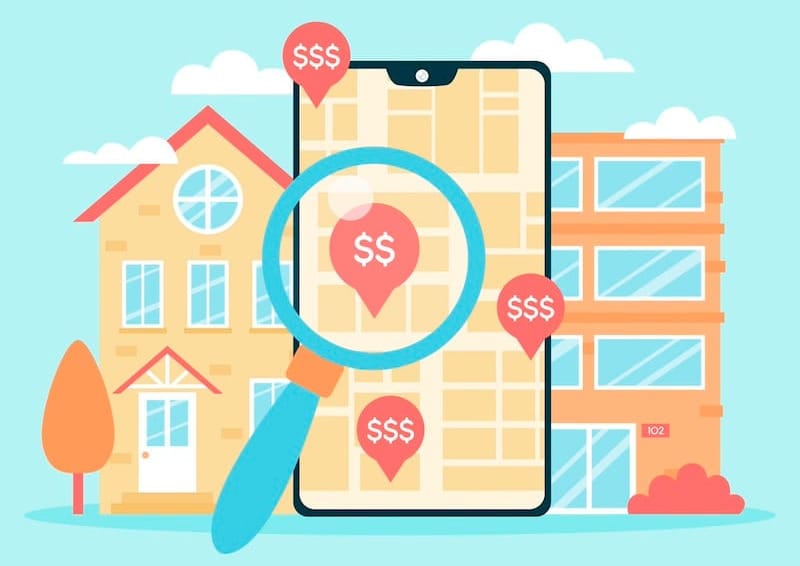Disability Insurance for Physicians: Safeguarding Your Earning Power as a Doctor

Designed by Freepik
What is disability insurance?
Disability insurance provides an income or a portion of income for you to live on if you become disabled and can no longer work to earn an income. Disability insurance can be for short term or for a longer time period, even up to retirement age, if one becomes permanently disabled.
Why do physicians need disability insurance?
More than 25% of all 20-year-olds will have a disability at some point before retirement, per estimates from the Social Security Administration. Almost 3% of doctors and surgeons reported a disability in 2017, such as hearing impairment, difficulty walking or visual impairment, according to AAFP.
Doctors have spent years acquiring specialized skills that cost a lot of time, money and effort. A disability that prevents them from exercising this knowledge and skillset will severely dent their earning potential and could impact their ability to pay off high-cost loans.
Many medical jobs require precision and highly specialized skills, eg: surgery. A disability that prevents doctors from exercising these specialized skills will dramatically reduce their earning potential.
How does disability insurance work?
Step 1: Buy a disability policy either directly or through your company. Pay the necessary premiums monthly. If your company is offering a disability policy, they may pay for part or all of the premium.
Step 2: In the event of a disability, you will file a claim with necessary proof of your disability from your doctor.
Step 3: The insurance company will pay the claim after the waiting or elimination period.
Types of disability insurance
Disability insurance is of 2 major types: short-term and long-term.
Short Term Disability
Short term disability benefits are paid for a period of 3-24 months. Often, short-term disability is available as an employer benefit. According to Aflac, short term disability pays between 40%-70% of your salary as a benefit.
Long Term Disability
Long term disability provides coverage from 2 years after disability upto age 65 or 67. It can replace 50%-70% of your base salary for the long-term.
Long term disability insurance can be of 2 types:
‘Own Occupation’ Disability Insurance
‘Own Occupation’ is a type of disability insurance that pays out benefits if you cannot work in the same job you held before your injury, even if you are able to work in another type of job. For example, if you are a surgeon, you may get disability insurance payouts if you are unable to continue to work as a surgeon, even if you can work as a general practitioner.
Typically, ‘Own Occupation Disability’ is paid for a period of 2 years. After that period, you will be eligible only for ‘Any Occupation’ – meaning you will be paid disability insurance only if you cannot work in any occupation.
‘Any Occupation’ Disability Insurance
‘Any Occupation’ disability is paid when you cannot work in any occupation for which you are reasonably qualified. If you can work in any occupation, even a lower paying job, ‘Any Occupation’ policies will not pay benefits. ‘Any Occupation’ disability insurance is less expensive than ‘Own Occupation’ insurance. In this case, a surgeon who is able to work as a general doctor but unable to practice surgery would not get disability benefits.
Many disability policies will pay for 2 years of ‘Own Occupation’ and then will have ‘Any Occupation’ coverage.
How to get disability insurance
There are a few different ways to get disability insurance.
Employer-sponsored Disability Coverage
Most employers will offer short term disability insurance and pay for some or all of the premiums. Make sure you sign up in the initial period after you join the company to avoid the medical examination process.
Buy your own individual disability insurance
If you do feel like the coverage from an employer sponsored disability insurance does not adequately cover your salary, you can buy individual disability insurance on your own. According to policygenius, on average, the cost of disability insurance is $2200 a year. In general, you can expect to pay 1% to 3% of your income to buy long- term disability insurance.
You can also add riders if you buy your own policies such as coverage for income increase in the future, cost of living increase or even the ability to pay off student loans. Adding riders will of course make your policy more expensive so be sure to evaluate whether you really need these riders.
When Do You Need Disability Insurance?
You might want to get disability insurance in the following scenarios:
Inadequate savings
You do not have enough in savings to cover loss of income due to disability. In this case you might wish to ensure that disability insurance can cover your living expenses. For more ways to build a stronger financial cushion, check out 8 financial planning tips for young adults.
You have a specialized job
You have a highly specialized job that you have spent many years preparing for. If you were to lose your earning potential from this job, it is hard to replace. Own occupation disability insurance will provide coverage if you cannot work in your specialized profession, even if you could work elsewhere.
You Have Dependents
If you have family who depend on your income, then you should seriously consider disability insurance to help safeguard them in case you lose income due to a disability. If you’re preparing to start or grow your family, explore Can I afford a child to estimate the costs.
You may not need disability insurance if…….
You are financially independent
Your savings and assets can help you manage without a salary if you become disabled or injured. If you’d like to explore a unique path toward maintaining financial freedom, check out What is Coast FIRE? How to Coast Your Way to Financial Independence.
Your employer provides adequate disability coverage
If you believe your employer provides adequate disability coverage, especially if you have enough savings to supplement any gaps between the payouts and your living expenses, you may not need to buy your own disability insurance.
You are retired or close to retirement
If you are already retired or close to retirement, you may not need much income replacement in the event of disability. However, if you’re still looking to exit the workforce sooner rather than later, see if How to retire early at 55 aligns with your goals.
Your spouse of family members will help you in case of disability
If you have a spouse or family member whose salary you can rely on for your household’s living expenses, this can reduce your need for disability insurance.
Factors affecting cost of disability insurance
- Age: You will pay higher in premiums the older you are.
- Health Issues: If you have health issues, you will pay more for disability insurance.
- Income: The higher the income you want to replace or protect, the more will premiums be.
- Gender: Women pay more in premiums for disability insurance, mainly because of a higher probability of filing claims.
- Smoking: Smokers pay more in premiums than non-smokers.
- Own vs Any occupation: Own occupation insurance costs more, compared to any occupation.
- Waiting period or elimination period: If you have a higher length of waiting or elimination period before receiving benefits, your premiums will go down. If you have emergency funds or savings, it may help you tide over the elimination period. Inflation can also impact your overall costs; for a clearer understanding of inflation’s effect on interest rates, read Nominal vs Real Interest Rate.
- Length of coverage/ benefits – The longer the period for which you want coverage, the higher the premiums.
- Riders: If you get additional riders such as inflation protection, the cost of disability insurance goes up.
FAQs On Disability Insurance
How much disability insurance should I buy?
It is generally recommended to get disability insurance covering at least 60% of your income. But you should look at your full financial picture. Do you have enough savings or assets to cover your living expenses in case you should be disabled? Also look at what expenses need to be covered – mortgage, living expenses etc before you decide how much disability coverage you need.
Is disability benefit taxable?
If you bought your own individual disability insurance with post-tax dollars, it is not taxable: https://www.debofsky.com/articles/disability-tax/
Group benefits are taxable in the proportion of premiums paid for by employer.
Are there exclusions for disability insurance?
Disability policies have exclusions that are typically not covered. These could include self-inflicted injuries, pre-existing conditions, or Acts of War or driving under the influence or injuries from illegal activities.
Conclusion
It is important for doctors to get disability insurance to pay for living expenses in the event of a disability event. First evaluate your employer-sponsored disability and your expenses and savings to figure out if and how much additional disability you need to purchase on your own. Also consider if you need ‘own occupation’ vs ‘any occupation’ coverage.
At Planwell, we are building a fully automated AI financial planner and advisor to help you make super personalized financial decisions such as how to retire early and achieve financial independence & how much house you can afford, while considering your lifestyle, retirement goals and other key factors.
We will be launching the product very soon. Stay tuned for an update. In the meantime, check out our blog posts to help you plan your finances.
- Top 5 Books For Financial Literacy: Here are the best 5 books you can read to learn the fundamentals for financial literacy.
- How to build a personal financial plan: Before you make a home purchase, make sure to build your personalized financial plan with our 10 step guide.
- How to Use AI Budget Calculators and Tools to Plan Your Finances: Take advantage of our free FIRE calculator to plan your finances more effectively.
- 5 Common Money Mistakes to Avoid: Learn about the pitfalls that could derail your early retirement plans.
- 5 Overlooked Workplace Benefits That Can Save You Money: Maximize your work benefits to boost savings and well-being.
Related Posts
About
©2023 Planwell.io



